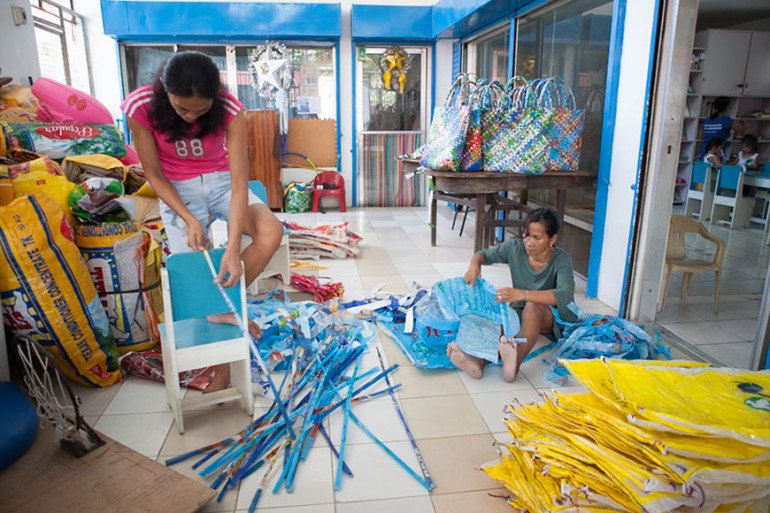
© Alex McIntosh
28 April 2014
by João Guarantani
Alex McIntosh, from the Centre for Sustainable Fashion, reports on his recent visit to the Philippines for a British Council programme focusing on fashion and sustainability.
I recently had the opportunity to travel to Cebu in the Philippines to deliver a workshop for the British Council on fashion and sustainability. This being my first visit to the country, I had little idea what to expect from designers and brands in an economy growing faster than nearly any other in the world, but where abject poverty still blights the lives of much of the population. Would their perspective on sustainability be very different to my own? Would my experience of and attitude to fashion seem pertinent or irrelevant to Filipino culture?
The recent advent of super typhoon Haiyan (locally known as Yolanda) has drawn a great deal of attention to the 7,107 islands that make up the Philippines archipelago and aid has flooded in to assist the areas where lives, livelihoods and homes have been lost. Such events always bring the need for environmental preservation and community development starkly into focus, and out of the devastation, innovative initiatives and businesses can emerge. I was excited to discover how fashion and social entrepreneurship might have come together to facilitate and support post typhoon redevelopment and fill the gap that can be left when the aid runs dry.
As always, on arrival my first challenge was to understand the expectations of those in the room. Exploring this agenda requires an acceptance of complexity and change but also a clear framework within which to take positive action and develop a personal connection to the issues at hand. It takes commitment and passion to explore alternative ways of working and to re-think the creative process.
I began by asking everyone at the workshop to give me their perspective on sustainable design; I found myself with a wildly diverse set of answers, matching the diversity of people in the room. Some felt that sustainability is a trend, or an opportunity to create market differentiation; others identified product longevity and durability, sourcing local materials, minimizing resource use, creating livelihoods for impoverished communities. And the list goes on. The honest truth is that each of these answers has some relevance, but it was my job to set all these different perspectives in context, demonstrating how they might contribute to a bigger picture.
Offering both information and inspiration tends to be the most effective way to start a dialogue around sustainability. There are no hard and fast rules or easy solutions - thinking and acting sustainably requires each of us to balance our own needs with those of the society, culture and ecology around us. When we address this balance we can start to make considered decisions and to embed sustainability in the DNA of our businesses and the products and services we provide. I tend to ask designers to look at their own values, to ask themselves why they do what they do and what they really hope to offer and achieve in the world. Often it helps to have examples of others who have taken a similar path and I'm glad to say that, despite the cultural barriers, I found that there is a great deal of common ground between the design world I inhabit and the one I found 7,000 miles away in Cebu.
The amazing array of businesses in the room was at times overwhelming but ultimately exciting. From high-end wedding gown designers to accessories made on and from landfill; each individual engaged their imagination to explore what the future of their business and the future of Filipino fashion as a whole might be. There are challenging times ahead, as high street giants Zara and Forever 21 sweep into the Filipino market, small brands can easily get squeezed out. However, I firmly believe that those who are genuinely connected to the people and the environment around them can create a deeper and more meaningful connection with their customer and a unique identity that can compete with the homogenization of the mass market.
Category
British Council Project
Location
Philippines